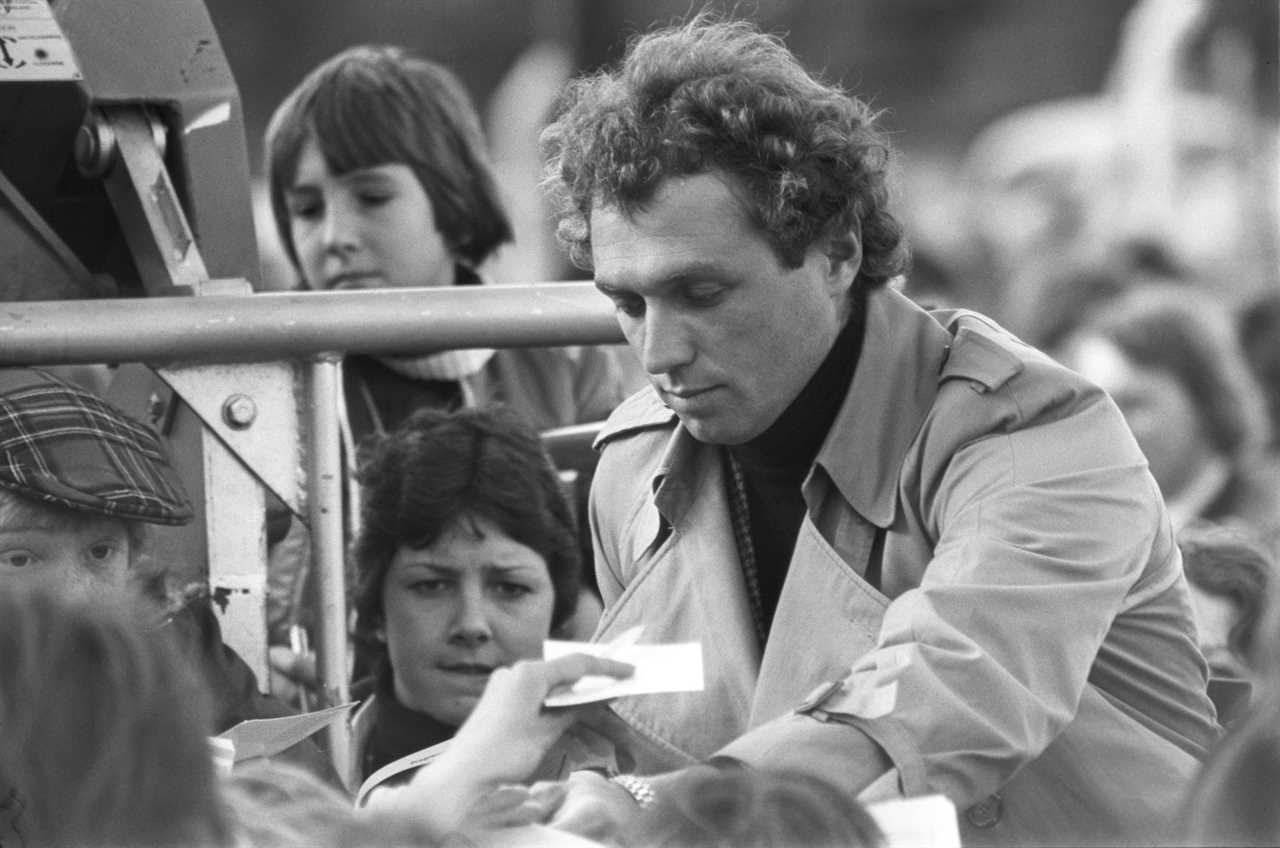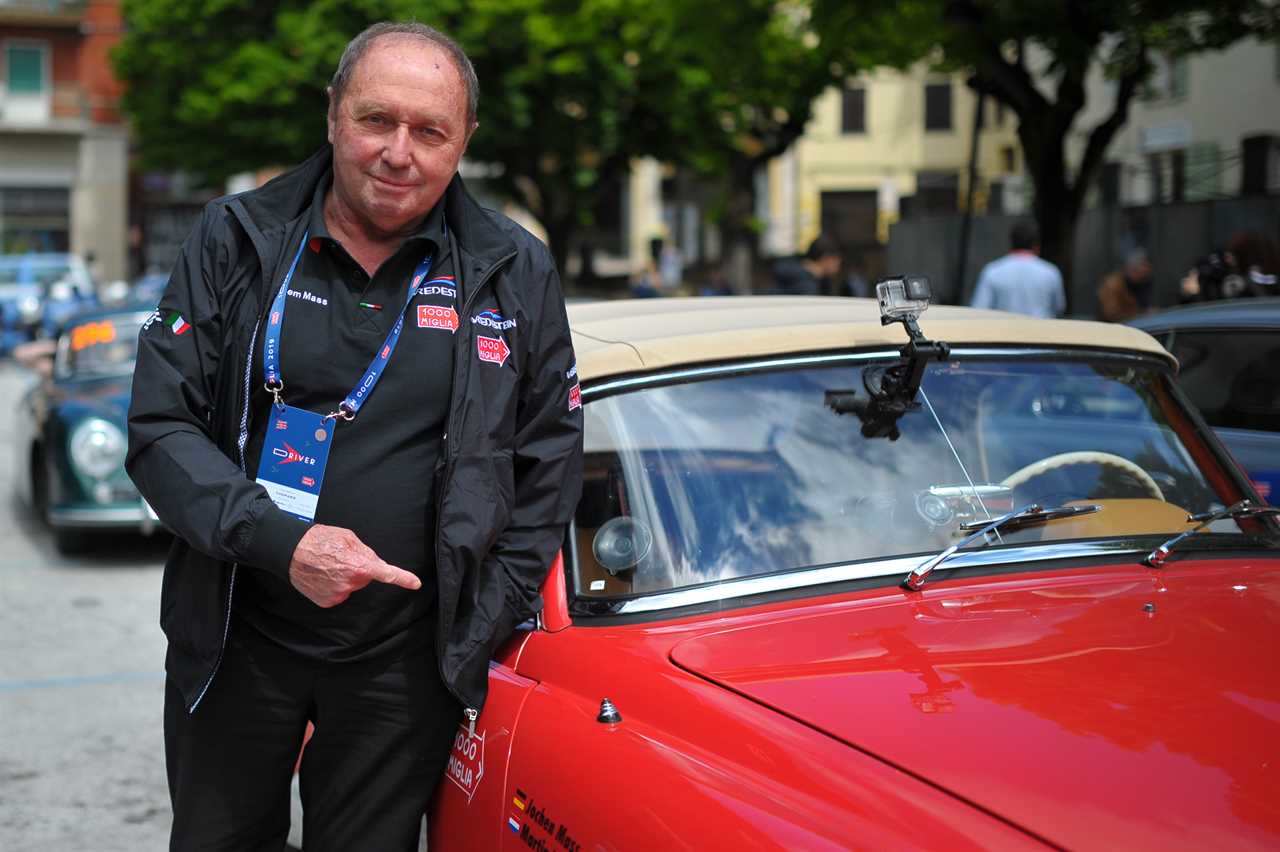
F1 Veteran Jochen Mass Encounters Health Crisis
Jochen Mass, the esteemed former McLaren driver, has recently experienced a medical emergency. At 79 years old, Mass will be taking a break from all public activities as he focuses on his recovery.
Family Seeks Privacy During Recovery Period
A statement shared on Mass' social media platforms revealed: "The family of Jochen Mass wishes to inform everyone that he is currently recuperating from a recent medical issue. While his condition remains stable, he will be refraining from public appearances and engagements for an indefinite period as he prioritises his health."
"We deeply appreciate the support from everyone and kindly ask for privacy during this challenging time. Wishing Jochen a swift recovery."
Support Floods in from Motorsport Community
Renowned Team GB champion Sir Chris Hoy was among the first to extend his best wishes, posting: "Get well soon Jochen."

Hoy, who is battling terminal prostate cancer, is known for his passion for motorsport, especially endurance racing.
Racing driver André Lotterer also offered his encouragement, stating: "All the best. Stay strong ❤."
Celebrating a Storied Racing Career
Mass embarked on his Formula One journey with 105 race starts, notably securing a victory at the 1975 Spanish Grand Prix for McLaren and achieving seven additional podium finishes.
Throughout his career, the German driver was teammates with several World Champions, including Emerson Fittipaldi, James Hunt, and Keke Rosberg.

Triumphs Beyond Formula One
After his tenure in Formula One, Jochen Mass continued to excel in motorsport. In 1989, he triumphed in the demanding 24 Hours of Le Mans race driving for Sauber.
Mentoring Future Legends in Motorsport
Mass played a pivotal role in the development of Michael Schumacher, widely regarded as one of the greatest Formula One drivers ever. He is credited with advising Schumacher to join Ferrari instead of the then-dominant Williams team, a decision that significantly shaped Schumacher's illustrious career.
Continued Influence in the Automotive World
In recent years, Jochen Mass has served as a brand ambassador for Mercedes, representing the marque and contributing his vast experience to the company's motorsport endeavours.
A Legacy of Dedication and Excellence
Jochen Mass' contributions to racing have left an indelible mark on the sport. From his competitive spirit on the track to his mentorship off it, Mass exemplifies dedication and passion. As he takes time to recover, the racing community stands united in support, hoping for his full recuperation.
Frequently Asked Questions
How can F1 cockpits improve driver comfort and safety?
F1 cockpits are meticulously designed focusing on driver safety and comfort. Safety is enhanced through the use of survival cells constructed from carbon-fiber composites, padding, and the halo device as mentioned earlier. The seats are custom-molded for each driver, providing a comfortable and secure fit. The cockpit is designed with a minimum amount of space to facilitate driver extraction.
How does the Formula 1 rule set influence car technology and design?
Formula 1 rules, or regulations, set by the FIA have a profound impact on car design and technology. These regulations define parameters such as dimensions of the vehicle, engine specifications and aerodynamics, safety features, etc. Teams must continually innovate to gain competitive advantage within these constraints. Rules are updated to promote safety, closer racing and sustainability.
What innovations have increased fuel efficiency in Formula 1 engine?
Formula 1 engines have become more fuel efficient thanks to several innovations. Turbocharging enables smaller displacement engines produce more power while using less fuel. Direct fuel injection provides precise fuel delivery for better combustion efficiency. Energy Recovery System captures and reuses wasted energy to reduce fuel consumption. These and other advancements contribute to the efficiency and sustainability of modern F1 power units.
How do aerodynamics play a role in Formula 1 racing?
In Formula 1, aerodynamics play a crucial role in the performance and handling. The car's bodywork and wing design are used to increase downforce. This increases grip on the track. Factors such as drag reduction are also crucial for maximizing straight-line speeds. Aerodynamic efficiency is achieved by balancing the drag and downforce. This leads to complex designs, and continuous development during racing season.
How is telemetry used in Formula 1 Formula?
In Formula 1, telemetry is a sophisticated technology that sends data in real time from the cars back to the team's headquarters and the engineers at the pit wall. These data may include information on the driver's input, engine, brakes, tire pressure, fuel level, and fuel levels. Engineers use telemetry to monitor the car's performance, make strategic decisions, and identify potential issues before they become critical. Telemetry is crucial for optimizing the performance of both the driver and the car throughout the race weekend.
What steps is Formula 1 taking to be more sustainable?
Formula 1 is adopting several measures to become more sustainable. One of the major initiatives is the transition to biofuels. The goal is to achieve a carbon footprint net zero by 2030. The sport is working on advanced fuel technologies that reduce greenhouse gasses. On-going efforts are made to implement greener and more efficient travel methods. F1 also works with partners to reduce waste and improve recyclability.
Statistics
- Modern Formula 1 car chassis are required to withstand a frontal crash test with a peak deceleration of no more than 25 g.
- The minimum weight for a Formula 1 car, including the driver but excluding fuel, is set at 752 kg for the 2023 season.
- Wind tunnel testing for Formula 1 cars is limited by regulations, with teams only allowed a maximum of 40 hours of running per eight-day aerodynamic testing period.
- Formula 1's research into sustainable fuel aims to create a 100% sustainable fuel for use in F1 engines by the mid-2020s.
- The halo device introduced into Formula 1 in 2018 is designed to withstand the equivalent weight of a London double-decker bus.
- Formula 1 tires lose weight during a race due to wear and degradation, with up to 0.5 kg shed from each tire.
- Computational fluid dynamics simulations are capable of calculating around 300 million mesh points to simulate airflow around a Formula 1 car.
- In 2021, Formula 1 announced its plan to have a net-zero carbon footprint by 2030, which includes the cars, on-track activities, and the rest of the operations.
External Links
How To
What is the Evolution of F1 Braking Systems?
Studying the evolution from steel brakes to those made of carbon fiber is a great way to understand F1's braking system. Look into how advancements in materials technology have enhanced braking efficiency and heat dissipation. The brake-by wire system is important for regenerative braking. Study how teams work closely with brake system manufacturers to optimize performance for each circuit's varying requirements.
Did you miss our previous article...
https://sportingexcitement.com/formula-1/geri-and-christian-horner-navigating-love-and-scandal-in-the-fast-lane
 CricketBoxingFormula 1GolfHorse RacingPremier LeagueTennisPrivacy PolicyTerms And Conditions
CricketBoxingFormula 1GolfHorse RacingPremier LeagueTennisPrivacy PolicyTerms And Conditions
